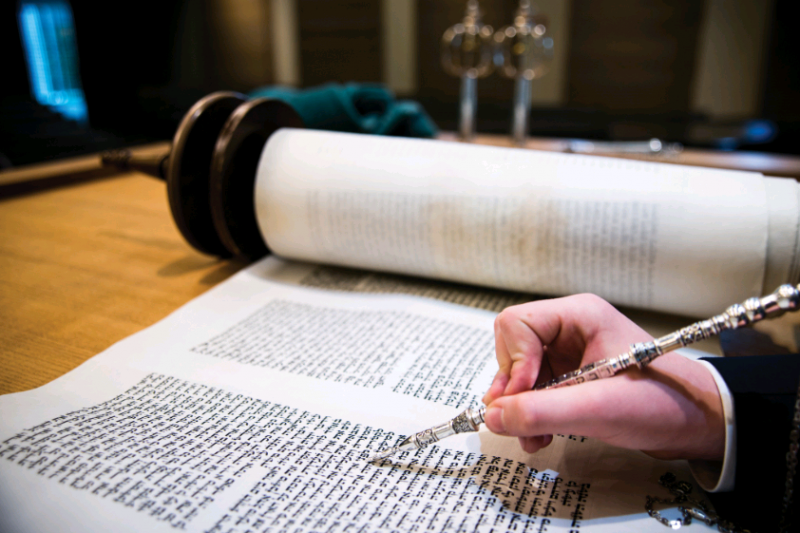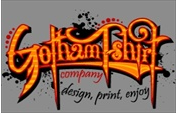
Photo by Andi Schreiber Photography
Bar/Bat Mitzvah 101
By the time your son or daughter steps up to the bimah one Shabbat morning to recite
his or her haftarah, they will understand perfectly well what the first half of this sentence
meant. But will you? And will you be able to explain it all to your guests? Here is a short
glossary of important Hebrew phrases to know before you go:
Aliyah: In Hebrew, the word aliyah means to go up, or, as a noun, an ascent. During the Torah reading portion of the service, some members of the community are offered an aliyah, meaning they are called up to the bimah to perform a certain role. This can include reciting the blessing over the Torah, reading from the Torah, dressing the Torah and returning it to the ark, or some other function. It is considered an honor to be called up, and as such it is often given to family members and close friends of the Bar or Bat Mitzvah.
Aron Ha-Kodesh: Literally meaning “the holy ark,” the Aron ha-Kodesh is an ark where the sacred texts used during a prayer service are held. Mostly, this includes one or more scrolls of the Torah and perhaps a similar looking scroll that will hold the haftarah portions. The ark itself is meant to symbolize the mishkan (tabernacle) in which the ancient Israelites stored the sacred tables Moses received on Mount Sinai.
B’nai Mitzvah: B’nai Mitzvah is the plural of Bar Mitzvah and is the term used to describe the coming of age according to Jewish tradition. Literally meaning “master of commandments,” becoming a Bar or Bat Mitzvah means the person is obliged to observe the Jewish commandments, and a ceremony, along with a celebration, takes place to mark this moment. The Bar Bat Mitzvah event is a formal and spiritual declaration of a child’s accession to adulthood. Jewish tradition designates Bar and Bat Mitzvah age as 13 for a boy and either 12 or 13 for a girl.
Bimah: Hebrew for stage, the bimah is the raised location in the sanctuary where the Torah is read. At Bar and Bat Mitzvahs, family members and close friends are often called onto the bimah for an aliyah, or to assist with the service.
D’var Torah: Literally “a thing of Torah,” a d’var Torah is a speech that tried to convey a life lesson or message supported by the story in the weekly parasha or haftarah (scripture readings). After the Torah portion is read, the Rabbi will give a d’var Torah, typically as part of a sermon; when a child becomes a Bar or Bat Mitzvah, he or she delivers a d’var Torah as well, often tying it into personal experiences.
Davening: A transliteration of the Yiddish word, meaning praying, to daven is to pray. Like in many other faiths, davening can take numerous, varied forms, from mediation to the more traditional chanting of prayer in synagogue.
Haftarah: Often mispronounced as “haf-torah,” the haftarah is a selected reading from one of the other sections of the Jewish Bible (Old Testament). Traditionally, the haftarah is recited after the Torah reading on the Shabbat or another holy Jewish day, and is usually thematically related to the parasha. It is customary for the Bar Bat Mitzvah to read this portion of the scriptures in addition to any part of the parasha he/she has read.
Kiddush: This is the blessing recited over wine on Shabbat and other Jewish holy days. Kiddush derives from the Hebrew word kadosh, which means holy. By saying kiddush, one is proclaiming the holiness of the day.
Kippah: The Hebrew name for the traditional head covering worn by Jews in synagogue as well as, for some, in daily life. Often called a yarmulke, its Yiddish name, the kippah is meant to signify a Jew’s recognition of the presence of God. In more orthodox Jewish sects, only men wear kippot (plural of kippah), though some observant women cover their heads using hats, veils, or wigs. Less observant Jews often choose to wear kippot only during religious pursuits, such as when in a synagogue or while studying sacred texts. And some more liberal Jews do not wear a kippah at any time.
Minyan: The number of people required to be present for certain prayers to be recited. A minyan consists of 10 Jewish adults, or, for Orthodox Jews, 10 Jewish males. When a child becomes a Bar or Bat Mitzvah, he or she is eligible to be counted in the minyan.
Motzi: The blessing recited over bread, which ordains the start of the meal. On Shabbat and other holy days, a festive, braided challah bread is used.
Parasha: The weekly Torah portion read in synagogue. On Shabbat, a cantor or members of the congregation read the parasha. The Torah portion is divided into seven sections. As a new member of the Jewish community, the Bar Bat Mitzvah will often read a section or even the entire parasha during his or her Bar or Bat Mitzvah service. Once children receive their Bar Bat Mitzvah date, the parasha they will read from is known.
Shabbat: The Jewish day of rest, where everyone is commanded to stop all work before sundown on Friday and enjoy the company of friends and family until sundown on Saturday. This is also typically the day on which Bar and Bat Mitzvahs are held (by custom though not by requirement). It is customary to indulge in an extensive meal on Friday night with guests, and the following morning a longer prayer service is usually held. Shabbat is meant to be a moment of peace in an otherwise hectic world and, depending upon one’s level of observance, some choose to refrain from many activities on Shabbat such as driving, writing, or watching TV. A special Shabbat service is held in most synagogues on Saturday morning that includes these three parts: Shacharit, the morning prayers; the Torah Service, which includes the reading of the Torah and the haftarah (the focal point of the Bar Bat Mitzvah); and Musaf, the additional Shabbat prayers focusing on song-like praises of God.
Simcha: The literal definition of simcha is joy. Simcha refers to a special happy occasion in a Jewish life, such as a Bar or Bat Mitzvah, a bris, or a Wedding.
Tallit: A tallit is a traditional prayer shawl worn by Jewish adults while praying in synagogue. At each of the four corners of the garment are fringes of string, or tzitit in Hebrew, that are braided and knotted as a way to remind Jews of the commandments issued in the Torah. Anyone of Bar Bat Mitzvah age or older who approaches the bimah to take a leadership role in the services is required to put on a tallit; beyond that circumstance, however, there are different customs on who wears a tallit, according to different sects of Judaism. Orthodox sects of Judaism traditionally reserve the privilege of wearing a tallit to married men, while conservative and reform sects allow both sexes to wear a tallit, starting from Bar Bat Mitzvah age.
Torah: Torah has multiple definitions, but in this context it refers to the first five books of the Bible, often called the Five Books of Moses. The Torah recounts the creation of the world and the establishment of the Jewish faith, while also offering a set of laws on which Jewish life is based. The Torah is divided into 54 portions with one read each week (two weeks have double portions). The reading of each week’s portion (or part of the portion in some traditions) serves as the focal point of the Shabbat prayer services.
Trope: In Jewish tradition, sacred text is chanted rather than simply read, whether for public reading or for study. Trope is the Yiddish word for the 1,400-year-old system of distinctive marks that function as musical notation and punctuation for the biblical text. The trope determines the actual tune used by readers for the parasha and haftarah. As part of their preparation, some B’nai Mitzvah learn the names and tunes for each trope marking so they can figure out the cantillation for themselves.
 Get a copy of Mitzvah Market Magazine here.
Get a copy of Mitzvah Market Magazine here.





